Appendix of Graphic Data
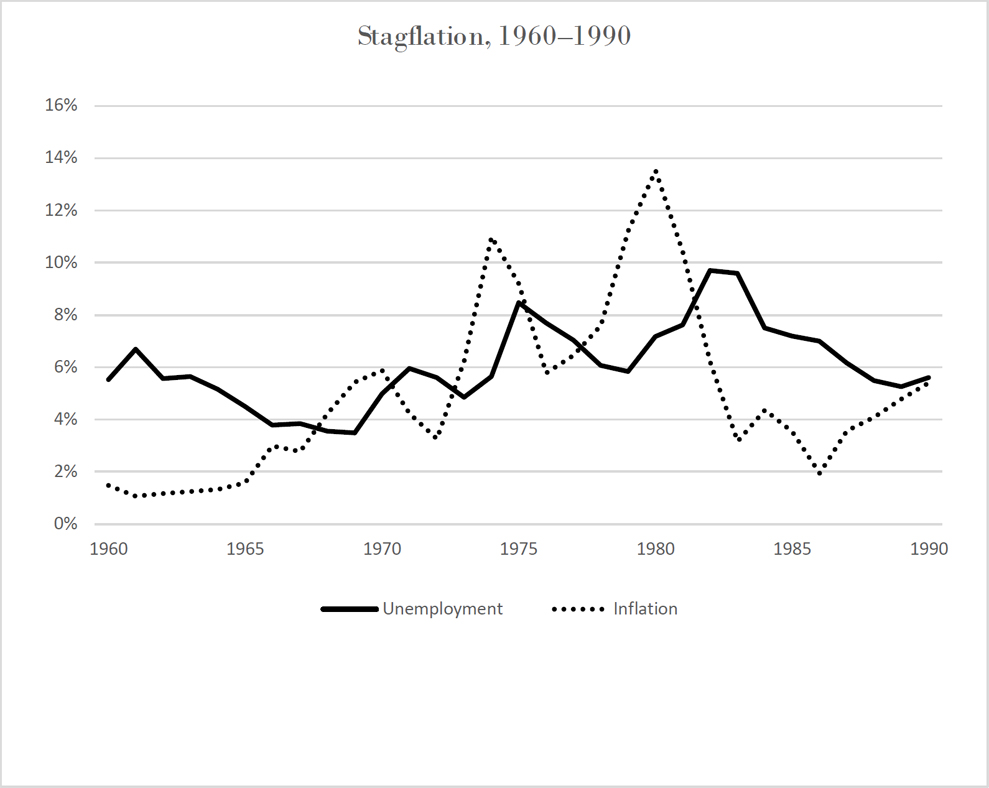
Source: Bureau of Labor Statistics
Notes: The fathers of the Great Society argued the country could suffer from inflation or unemployment. But not both at the same time. 1960s policies, however, delivered simultaneous inflation and unemployment in the 1970s. A term described the perversity: “stagflation.”
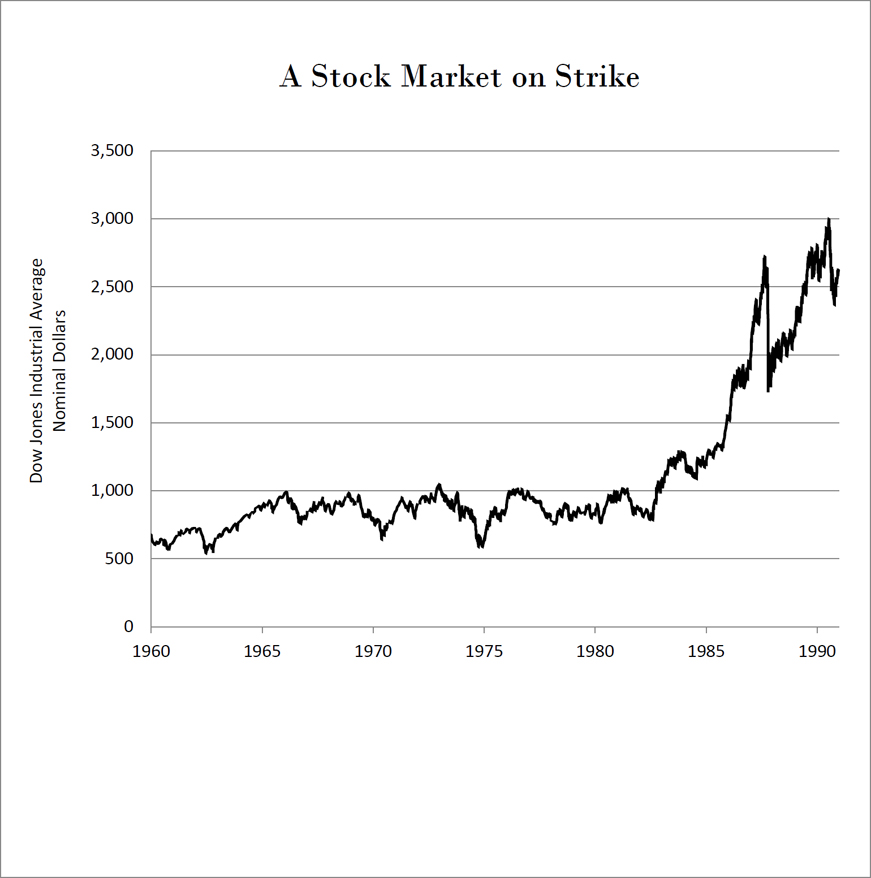
Source: Dow Jones & Co.
Note: The Dow Jones Industrial Average, America’s historic index, is a meter of markets’ view on the nation’s progress. In the mid-1960s, as Johnson’s Great Society was launched, the Dow Jones Industrial Average seemed likely to pass the “1000 landmark.” But the Dow did not pass that level definitively until the presidency of Ronald Reagan.
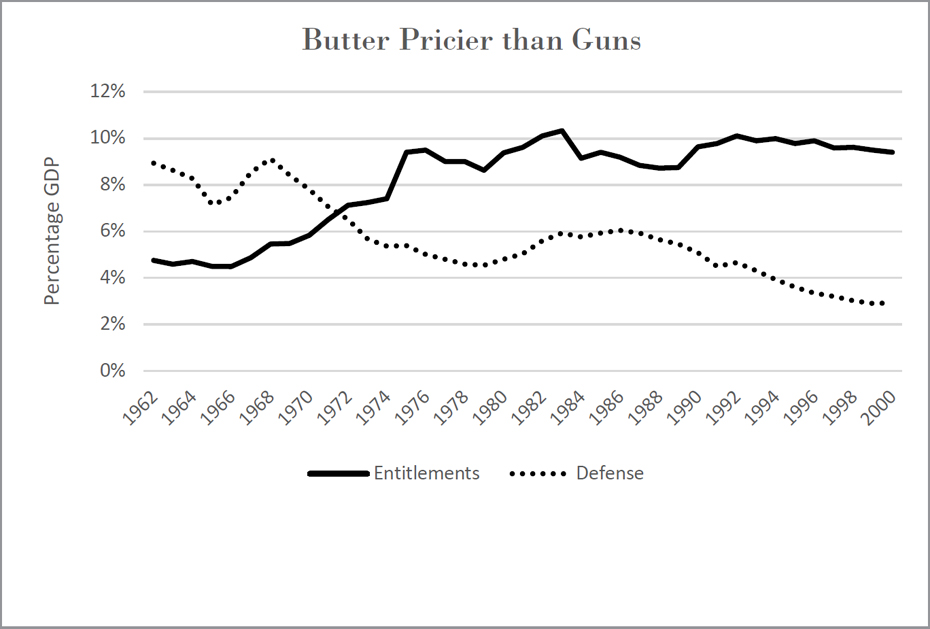
Source: John Cogan and Daniel Heil, Hoover Institution
Notes: From 1971 onward, U.S. government spending on “butter”—domestic entitlements—has surpassed military spending, i.e. “guns.”

Source: John Cogan and Daniel Heil, Hoover Institution
Notes: The New Deal is the respected granddaddy of American spending programs. But since 2002, the costs of 1960s commitments have exceeded the costs of New Deal commitments.
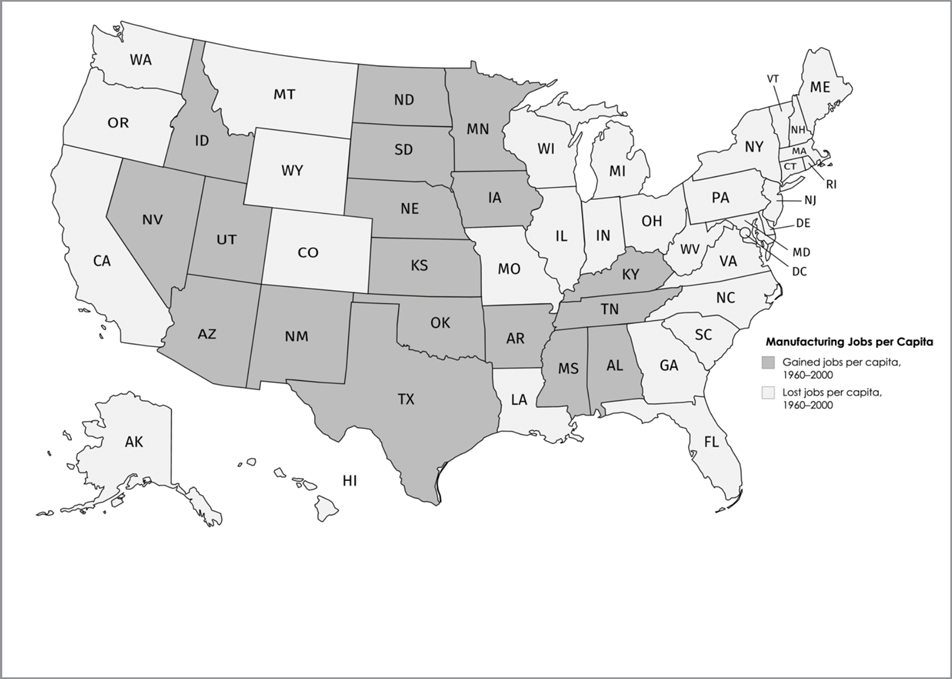
Source: Bureau of Labor Statistics
Created with mapchart.net ©
The number of American manufacturing jobs dropped dramatically between 1960 and 2000, in part because of foreign competition. But those manufacturing jobs that did stay tended to move to “right to work” states, states where companies did not have to run an all-union “closed shop.”

Source: Bureau of Labor Statistics
Notes: Under the 1947 Taft-Hartley Act, individual states were free to ban the “closed shop,” allowing companies and workers to opt out of unionization if they chose. States that opted out, “Right to Work” states, saw faster job growth.

Source: Barry T. Hirsch, David A. Macpherson, and Wayne G. Vroman, “Estimates of Union Density by State,” Monthly Labor Review 124, no. 7 (July 2001): 54, https://www.bls.gov/opub/mlr/2001/07/ressum2.pdf. Chart reflects both public-sector and private-sector membership.
Notes: In the early 1960s, unions ran America, not only economically but politically. Unions seemed only likely to strengthen after President John F. Kennedy signed an executive order sanctioning government worker union membership. But Americans themselves became disenchanted with organized labor, and the share of Americans in unions shrank over time.

Source: Alan Greenspan and Jeffrey Young
Notes: As guns and butter spending rose, America’s official gold stock dropped. When the level reached the equivalent of $10 billion, America closed “the gold window, ” preferring to block redemptions of gold rather than acknowledge foreigners were shorting the U.S. economy.
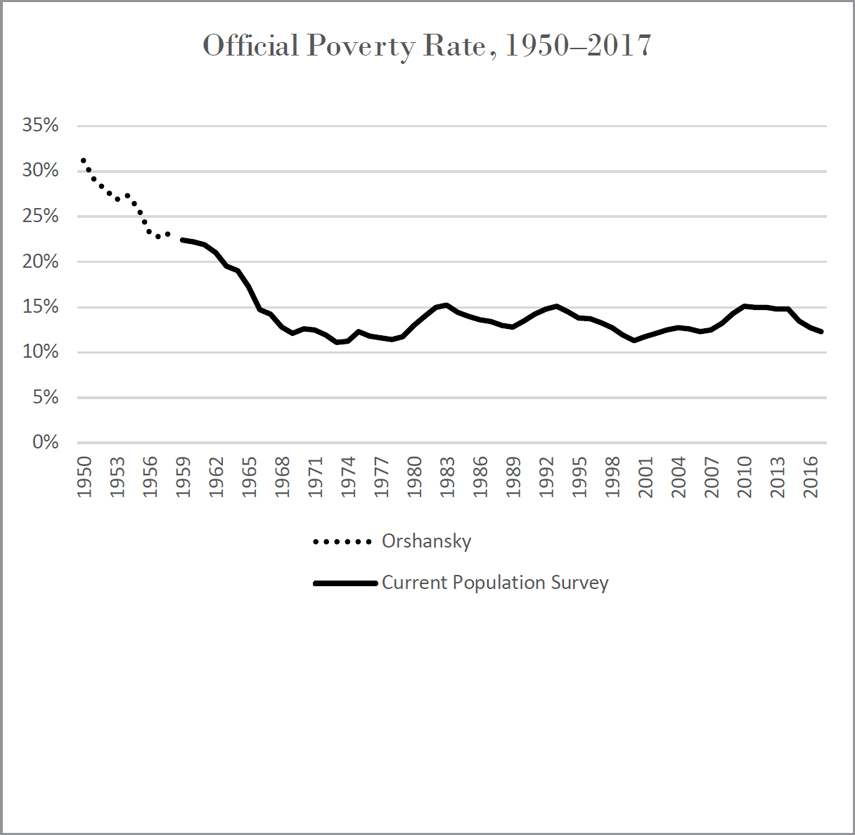
Source: Mollie Orshansky, The Measure of Poverty, Technical Paper I (Washington, D.C.: U.S. Department of Health, Education, and Welfare, 1977), 349; and Current Population Survey.
Notes: In the 1950s, poverty dropped dramatically, and in the 1960s, Lyndon Johnson promised to get rid of the remnant and “cure poverty.” But following the Great Society, poverty leveled off at about 10 percent.